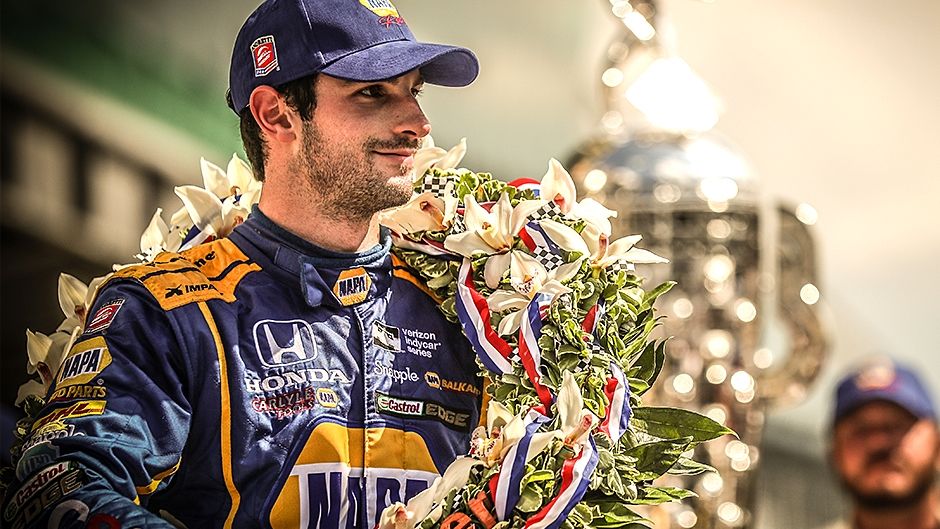History was made in the Brickyard over the weekend when American Alexander Rossi won the 100th staging of the iconic Indianapolis 500 oval race. Rossi took the checkered flag in dramatic fashion after a huge gamble on fuel strategy propelled the 24-year-old to a historic win in his first-ever run at the Indy 500.
Basically, an American making his debut at the Indy 500 won the 100th race of the legendary race. Sounds pretty historic, doesn’t it?
Rossi is the first driver in 15 years to win the race on his debut. Brazilian Helio Castroneves, an IndyCar veteran, was the last rookie to accomplish the same feat when he won the Indy 500 in 2001.
Making Rossi’s victory more improbable was the fact that at one point in the race, he was dead last in 33rd position. But a risky fuel strategy turned up aces for the IndyCar neophyte when he stopped for gas with 36 laps left in the race despite the expected mileage of a full tank of gas around the track being 32 laps. Somehow, Rossi managed to pull it off, crossing the finish line with his car literally running on fumes before coming to a complete halt short of pit road as he was completing his victory lap.
The rookie summed up the feelings of everyone watching the race when he proclaimed that he had “no idea how we pulled that off.” It’s a fitting statement to make when the race was dominated by IndyCar stalwarts at various stretches, including the aforementioned Castrovenes, polesitter James Hinchcliffe, and Ryan Hunter-Reay.
Even Rossi’s teammate, Carlos Munoz, had his moments but he ultimately had to settle for second place when he was forced to make a dash-and-go pit stop with four laps left in the race.->ke447
Josef Newgarden came in at third place and was followed Tony Kanaan and Charlie Kimball, who finished fourth and fifth, respectively.
Continue after the jump to read the full story.
Why It Matters
Alexander Rossi’s triumph at the 100th Indianapolis 500 is incredible for a number of reasons. For one, winning the Indy 500 as a rookie is a feat in it of itself. In 100 years of the race, only eight racers have done it before Rossi became the ninth. Castroneves was the last to do it in 2001 with Juan Pablo Montoya also accomplishing the feat in 2000. Before that, you’d have to go back to 1966 when Graham Hill did it and 1927 when George Souders took the checkered flag.
Then there’s the way he actually won the race. When you’re dead last in a race, it’s easy to just pack it in and call it a day. But give Rossi and his Andretti Racing team a lot of credit for swinging for the fences. Not only did they connect with the ball, they hit a moon shot straight out of the stadium. The improbably victory didn’t come with any drama – running on fumes in the last few laps is heart-stopping itself – but somehow Rossi was able to alternately drive fast and save just enough fuel to make it to the checkered flag. Those who watched the race might have even noticed his car sputtering on the final lap as team co-owner mercilessly screamed at him to conserve fuel. All in all, it was arguably one of the most entertaining Indy 500 races that we've seen in a long time.
Give a lot of credit to Alexander Rossi, who was a 66/1 long shot at the start of the race, to come through with the race of his life. It’s a testament to his talents and more importantly, it shows how exciting motor racing can be, especially when the chips fall the way they did during the Indy 500. Hopefully, we get to see more races like this in the future, not just in IndyCar but in other racing series as well. It’s great for the spectators. It’s great for the drivers and their teams. And it’s great for the sport.

